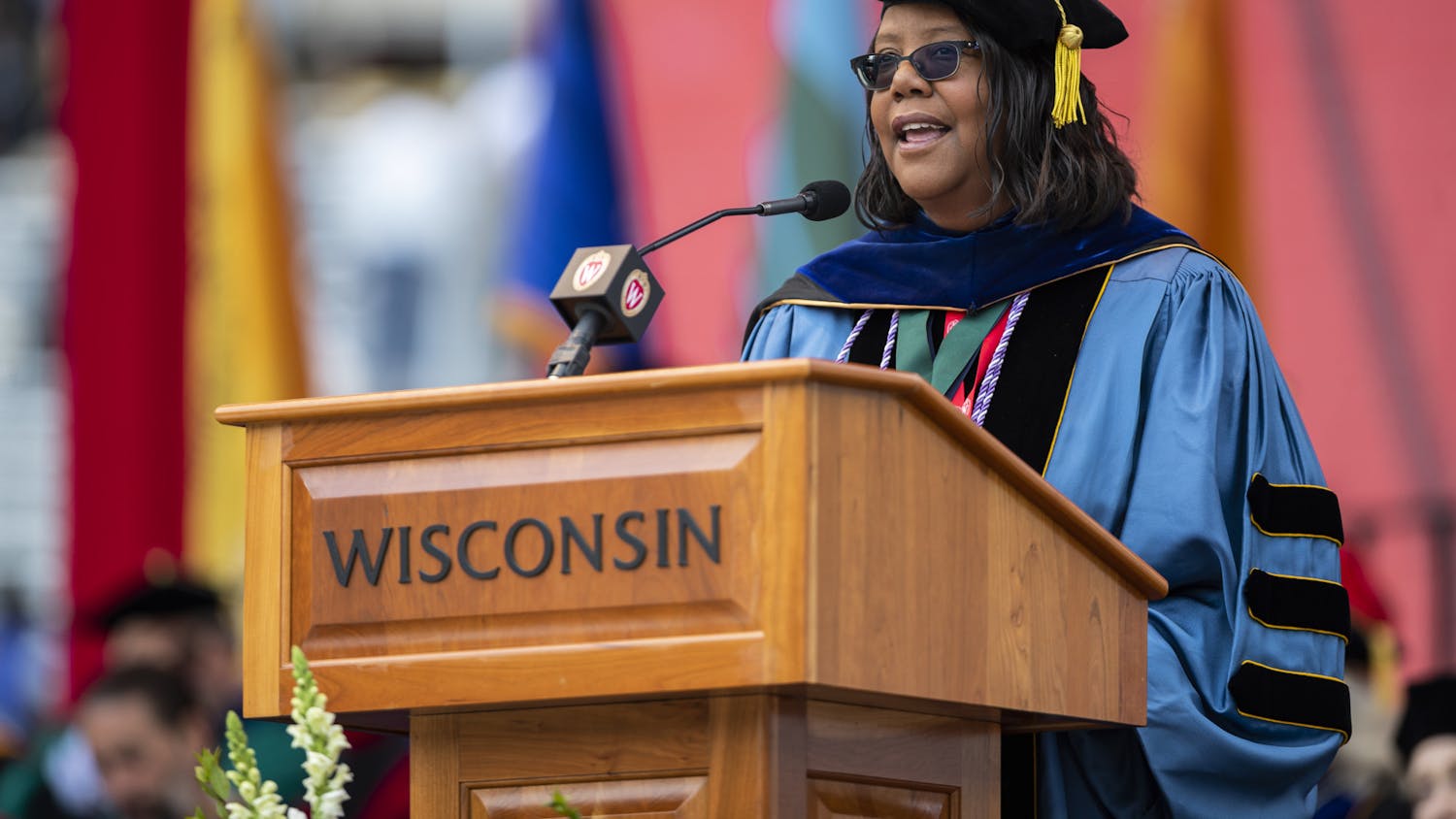The new exhibit presented in Madison Museum of Contemporary Art's State Street Gallery exposes and questions the honesty and prominence images have in our world today.Stephen Hilyard's The Beautiful Lie"" is a collection of photographic images and videos that attest to the power of the image.
Upon first look of Hilyard's works, one gets a sense of something being slightly askew, or of possible enhancement or forgery. While some artists may hide digital enhancement to their photographic works, Hilyard acknowledges the element of alteration and uses this as an important aspect in the message behind some of his works. The synthetic aspects of his photographs draw upon the power of the image today and the created world we derive many of our experiences from. While for some, doctored digital photographs have no place in a museum and are sometimes under scrutiny from critics, these photographs, regardless of how they were created, are beautiful testimonies to the power of the image.
The ""King Wave"" series of three photographs are incredibly beautiful. The three photographs all contain an image of a wave, but have been altered so that the viewer cannot fully grasp the scale of the waves or the natural colors. The images immediately bring about ideas of the sublime and draws parallels to Caspar David Friedrich's ""Monk by the Sea,"" in which the immense power of nature is so awe-inspiring that it overwhelms the viewer's experience.
The second series of photographs are selections from Hilyard's series ""50 Views of H.M.S. Belfast"" - images of a battleship originally presented in a book where they were accompanied by words or phrases from ""The Litany of Loreto,"" a dedication prayer to the Virgin Mary. The alteration of this photograph is immediately noticeable. Hilyard claims to have doctored them to heighten the sense of masculinity. While Hilyard's comparisons of religion, technology and sexuality are sometimes lost, and a few photographs genuinely lose their power to an overbearing presence of alterations, simplicity can be greatly appreciated.
Images like ""50 Views of H.M.S. Belfast (Gate of Heaven)"" and ""50 Views of H.M.S. Belfast (Seat of Wisdom)"" exhibit simplicity in form and style that once again reminds us of the strength of an image. These two images show a portion of the ship on one end of the photograph, and orange and gray tinted sky behind the ship consumes the other half. While these images have no doubt been doctored, the balance of alteration and formal simplicity create power and beauty, compared to other images where the original formal attributes have been overpowered by the sense of digital editing.
The last portion of the exhibit is a trilogy of videos that explores synthetic landscapes through the images. The videos have been beautifully created and could have been successful even without sound. The videos are works that cannot be explained, but must be seen. If you appreciated the look of Darren Aronofsky's ""The Fountain"" you would more than likely enjoy this exhibit and video.
Overall, this exhibit is a masterpiece even if you are not a fan of edited digital photographs. The power of the image is seen through Hilyard's works as well as the interplay between created landscapes and reality, or the beautiful lie we sometimes experience.






